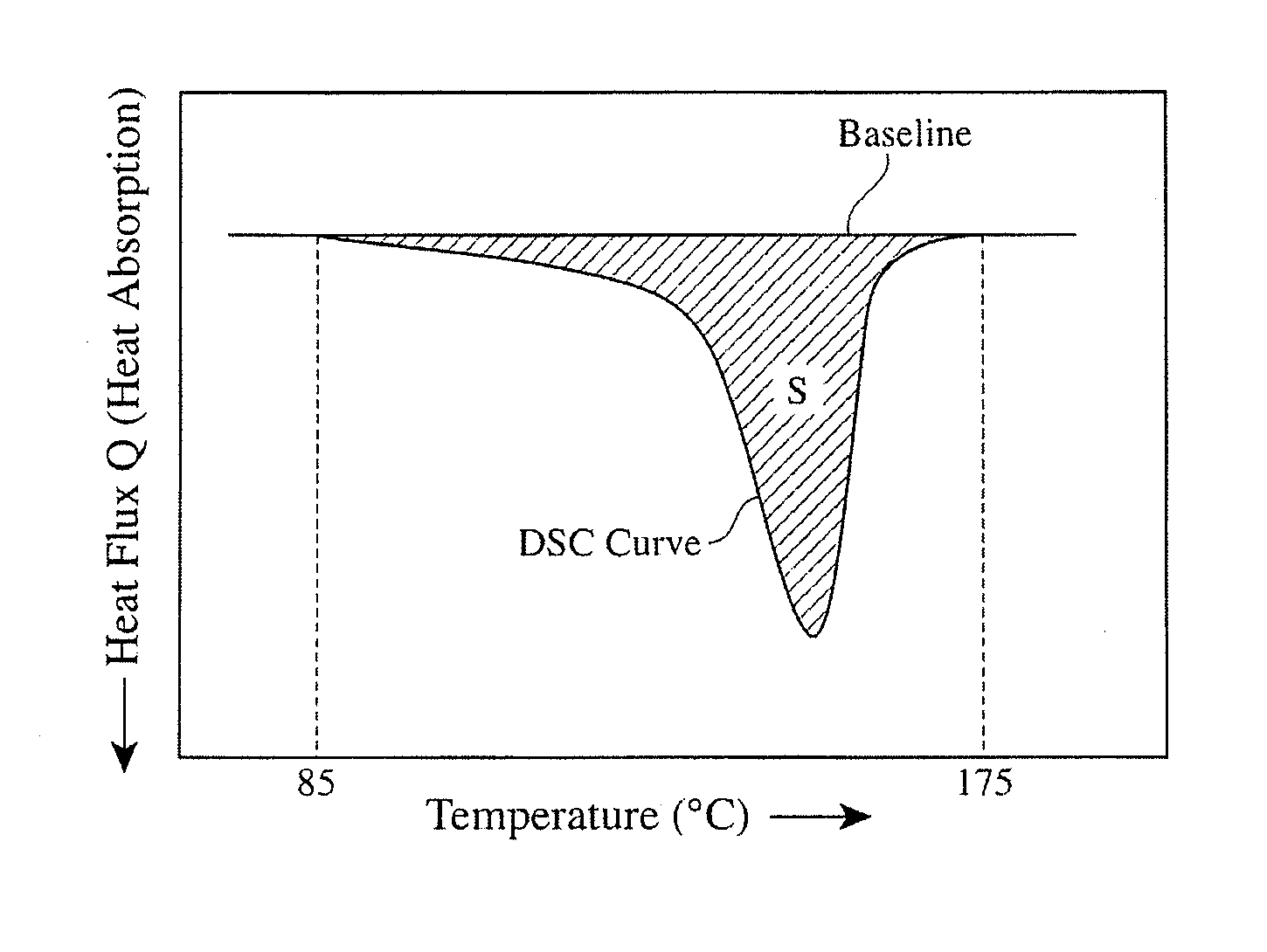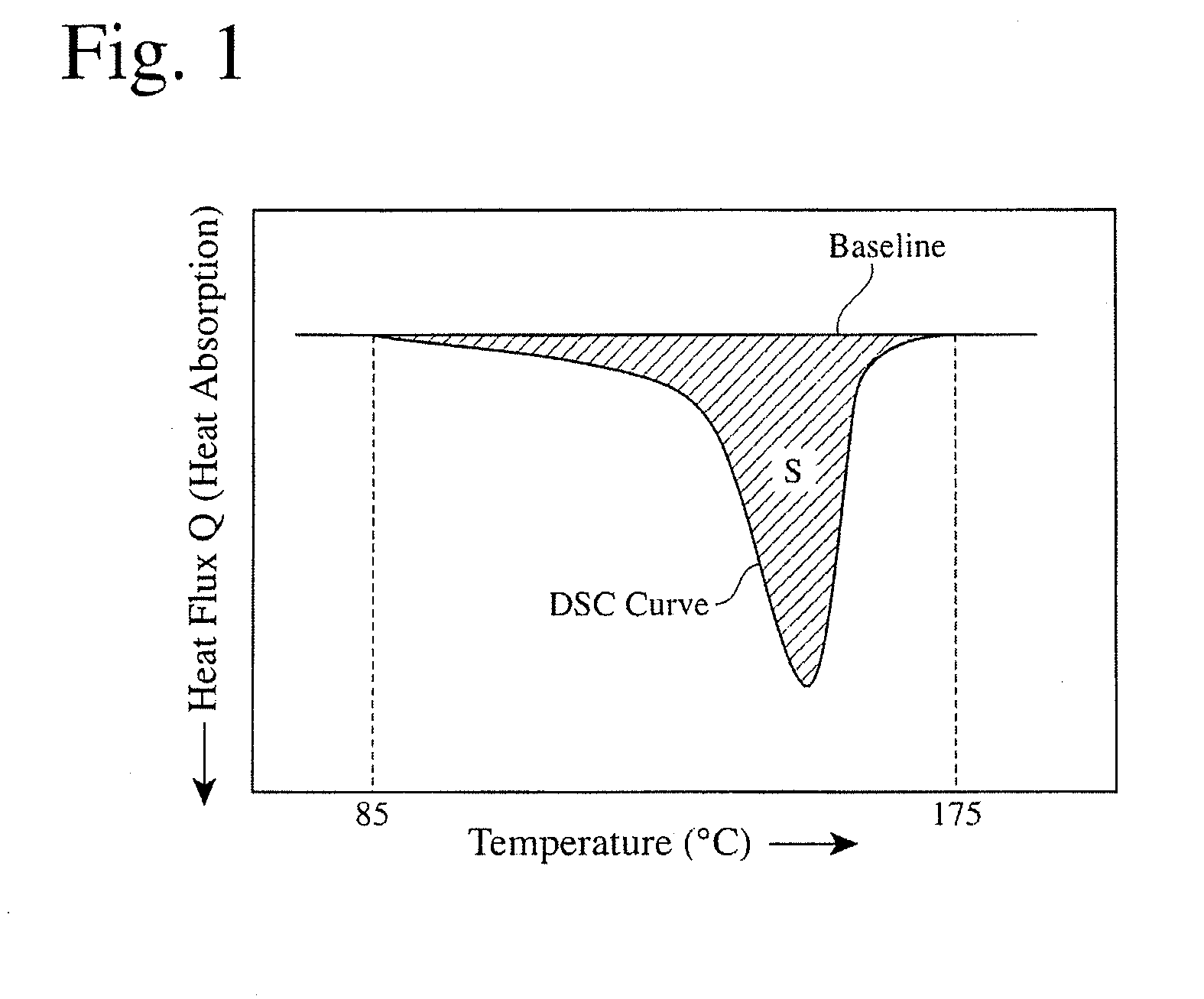Multi-layer microporous polyolefin membrane and battery separator
a polyolefin membrane and microporous polyolefin technology, applied in the direction of membranes, cell components, cell component details, etc., can solve the problems of poor film formability and thickness uniformity of microporous membranes, affecting the performance, productivity and safety of batteries, and the performance of microporous membranes containing polypropylene in at least one surface layer is largely affected by performance, productivity and safety, etc., to achieve well-balanced shutdown properties and melt properties
- Summary
- Abstract
- Description
- Claims
- Application Information
AI Technical Summary
Benefits of technology
Problems solved by technology
Method used
Image
Examples
example 1
(1) Production of First Microporous Polyolefin Membrane
[0150]Dry-blended were 100 parts by mass of a polyethylene composition comprising 20% by mass of ultra-high-molecular-weight polyethylene (UHMWPE) having a mass-average molecular weight (Mw) of 2.0×106, and 80% by mass of high-density polyethylene (HDPE) having Mw of 3.5×105, and 0.2 parts by mass of tetrakis [methylene-3-(3,5-ditertiary-butyl-4-hydroxyphenyl)-propionate]methane as an antioxidant, to prepare a mixture. The polyethylene (PE) composition comprising UHMWPE and HDPE had a melting point of 135° C. and a crystal dispersion temperature of 100° C.
[0151]The Mws of UHMWPE and HDPE were measured by a gel permeation chromatography (GPC) method under the following conditions.[0152]Measurement apparatus: GPC-150C available from Waters Corporation,[0153]Column: Shodex UT806M available from Showa Denko K.K.,[0154]Column temperature: 135° C.,[0155]Solvent (mobile phase): o-dichlorobenzene,[0156]Solvent flow rate: 1.0 ml / minute,[...
example 2
[0169]A three-layer, microporous polyolefin membrane was produced in the same manner as in Example 1, except that the first microporous polyolefin membrane was produced using a polyethylene composition (melting point: 135° C., crystal dispersion temperature: 100° C.) comprising 30% by mass of UHMWPE and 70% by mass of HDPE.
example 3
[0170]A three-layer, microporous polyolefin membrane was produced in the same manner as in Example 2, except that the second polyolefin solution at a concentration of 30% by mass was prepared using a polyolefin composition comprising 5% by mass of UHMWPE, 55% by mass of HDPE and 40% by mass of PP, (the PE composition comprising the UHMWPE and the HDPE having a melting point of 135° C. and a crystal dispersion temperature of 100° C.), and formed into the second microporous polyolefin membrane.
PUM
| Property | Measurement | Unit |
|---|---|---|
| melting point | aaaaa | aaaaa |
| melting point | aaaaa | aaaaa |
| melting point | aaaaa | aaaaa |
Abstract
Description
Claims
Application Information
 Login to View More
Login to View More - R&D
- Intellectual Property
- Life Sciences
- Materials
- Tech Scout
- Unparalleled Data Quality
- Higher Quality Content
- 60% Fewer Hallucinations
Browse by: Latest US Patents, China's latest patents, Technical Efficacy Thesaurus, Application Domain, Technology Topic, Popular Technical Reports.
© 2025 PatSnap. All rights reserved.Legal|Privacy policy|Modern Slavery Act Transparency Statement|Sitemap|About US| Contact US: help@patsnap.com


